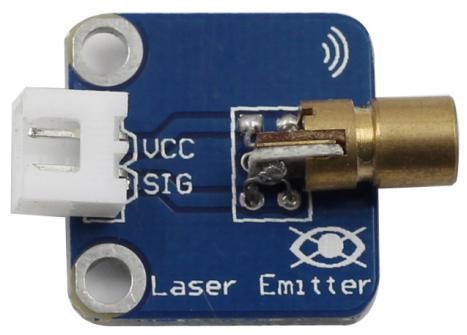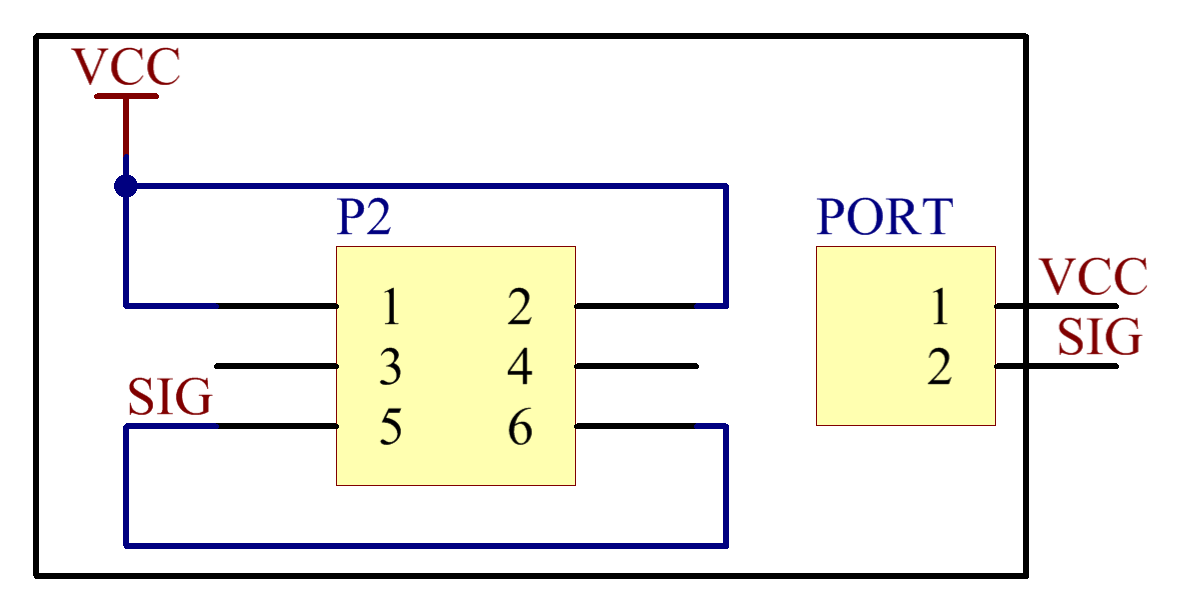Introduction
Laser is widely used in medical treatment, military, and other fields due to its good directivity and energy concentration.

Components
– 1 * Raspberry Pi
– 1 * Breadboard
– 1 * Network cable (or USB wireless network adapter)
– 1 * Laser Emitter module
– 1 * 2-Pin anti-reverse cable
Experimental Principle
A laser is a device that emits light through a process of optical amplification based on the stimulated emission of electromagnetic radiation. Lasers differ from other sources of light because they emit light coherently.
Spatial coherence allows a laser to be focused to a tight spot, enabling applications like laser cutting and lithography, and a laser beam to stay narrow over long distances (collimation), enabling applications like laser pointers. Lasers can also have high temporal coherence which allows them to have a very narrow spectrum, i.e., they only emit light of a single color. And its temporal coherence can be used to produce pulses of light—as short as a femtosecond.
The schematic diagram:

Experimental Procedures
Step 1: Build the circuit
| Raspberry Pi | Laser Emitter Module |
| 5V | VCC |
| GPIO0 | SIG |

For C language users:
Step 2: Change directory
cd /home/pi/SunFounder_SensorKit_for_RPi2/C/05_laser/
Step 3: Compile
gcc laser.c –lwiringPi
Step 4: Run
sudo ./a.out
For Python users:
Step 2: Change directory
cd /home/pi/SunFounder_SensorKit_for_RPi2/Python/
Step 3: Run
sudo python 05_laser.py
Now you can see the module send out Morse signals.
Note: Do NOT look directly at the laser head. It can cause great harm to your eyes. You can point the laser beam to the table and see the light spot flashing on the table.

C Code
#include <wiringPi.h>
#include <stdio.h>
#define LaserPin 0
int main(void)
{
if(wiringPiSetup() == -1){ //when initialize wiring failed,print messageto screen
printf("setup wiringPi failed !");
return 1;
}
//printf("linker LedPin : GPIO %d(wiringPi pin)\n",LedPin); //when initialize wiring successfully,print message to screen
pinMode(LaserPin, OUTPUT);
while(1){
digitalWrite(LaserPin, HIGH);
delay(500);
digitalWrite(LaserPin, LOW);
delay(500);
}
return 0;
}
Python Code
#!/usr/bin/env python
#####################################################
#
# DO NOT WATCH THE LASER DERECTELY IN THE EYE!
#
#####################################################
import RPi.GPIO as GPIO
import time
LedPin = 11 # pin11
def setup():
GPIO.setmode(GPIO.BOARD) # Numbers GPIOs by physical location
GPIO.setup(LedPin, GPIO.OUT) # Set LedPin's mode is output
GPIO.output(LedPin, GPIO.HIGH) # Set LedPin high(+3.3V) to off led
def loop():
while True:
print '...Laser on'
GPIO.output(LedPin, GPIO.LOW) # led on
time.sleep(0.5)
print 'Laser off...'
GPIO.output(LedPin, GPIO.HIGH) # led off
time.sleep(0.5)
def destroy():
GPIO.output(LedPin, GPIO.HIGH) # led off
GPIO.cleanup() # Release resource
if __name__ == '__main__': # Program start from here
setup()
try:
loop()
except KeyboardInterrupt: # When 'Ctrl+C' is pressed, the child program destroy() will be executed.
destroy()
